Or, have a look at code I've just written and tested to use the Windows API to run the Stop Transaction menu item. I raised a question about it on the SAP forum, but figured it out myself in the meantime (SAP Forum)
Private Declare PtrSafe Function FindWindowA Lib "user32.dll" (ByVal lpClassName As String, ByVal lpWindowName As String) As LongPtr
Private Declare PtrSafe Function GetSystemMenu Lib "user32" (ByVal hWnd As LongPtr, ByVal bRevert As Long) As LongPtr
Private Declare PtrSafe Function GetMenuItemCount Lib "user32" (ByVal hMenu As LongPtr) As Long
Private Declare PtrSafe Function GetMenuItemInfoA Lib "user32" (ByVal hMenu As LongPtr, ByVal un As Long, ByVal b As Long, lpMenuItemInfo As MENUITEMINFO) As Long
Private Declare PtrSafe Function SendMessageA Lib "user32" (ByVal hWnd As LongPtr, ByVal wMsg As Long, ByVal wParam As LongPtr, lParam As Any) As LongPtr
Public Const MIIM_STRING As Integer = &H40
Public Const MIIM_ID = &H2
Public Const WM_COMMAND = &H111
Public Const WM_SYSCOMMAND = &H112
Public Type MENUITEMINFO
cbSize As Long
fMask As Long
fType As Long
fState As Long
wID As LongPtr
hSubMenu As Long
hbmpChecked As Long
hbmpUnchecked As Long
dwItemData As Long
dwTypeData As String
cch As Long
End Type
Public Function RunMenuItemByString(ByVal sMenuItem As String, _
ByVal sWindowClass As String, _
ByVal sWindowText As String, _
ByVal iCommandType As Integer) As Boolean
Dim hWnd As LongPtr, hMenu As LongPtr, lpMenuItemID As LongPtr
Dim lngMenuItemCount As Long, lngMenuItem As Long, lngResultMenuItemInfo As Long
Dim typMI As MENUITEMINFO
Dim s As String
Dim blnRet As Boolean
hWnd = FindWindowA(sWindowClass, sWindowText)
hMenu = GetSystemMenu(hWnd, 0&)
lngMenuItemCount = GetMenuItemCount(hMenu)
For lngMenuItem = 0 To lngMenuItemCount - 1
typMI.cbSize = Len(typMI)
typMI.dwTypeData = String$(255, " ")
typMI.cch = Len(typMI.dwTypeData)
typMI.fMask = MIIM_STRING Or MIIM_ID
lngResultMenuItemInfo = GetMenuItemInfoA(hMenu, lngMenuItem, 1, typMI)
s = Trim$(typMI.dwTypeData)
lpMenuItemID = typMI.wID
If InStr(1, s, sMenuItem, vbTextCompare) > 0 Then
blnRet = SendMessageA(hWnd, iCommandType, lpMenuItemID, 0&) = 0
Exit For
End If
Next lngMenuItem
RunMenuItemByString = blnRet
End Function
Public Function TestRunMenuItemByString()
lpHwndSAPSession = oSAPSession.FindById("wnd[0]").Handle
sWindowText = GetWindowText(lpHwndSAPSession)
TestRunMenuItemByString = RunMenuItemByString("Stop Transaction", "SAP_FRONTEND_SESSION", sWindowText, WM_SYSCOMMAND)
End Function
The TestRunMenuItemByString function can be used only after a session is started, and will only work if there is actually a transaction executing. You will need to figure out how to reference your sap session object (oSAPSession) in order to use the Handle value from it.
The declarations should work in both 32 bit and 64 bit versions of VBA and the LongPtr has been used for the handle (h) and pointer (lp) variables to reflect this.
This was tested in Microsoft Access, but I see no reason why it shouldn't work in VBA in other Office applications. I can't vouch for it being adaptable for VBScript.
